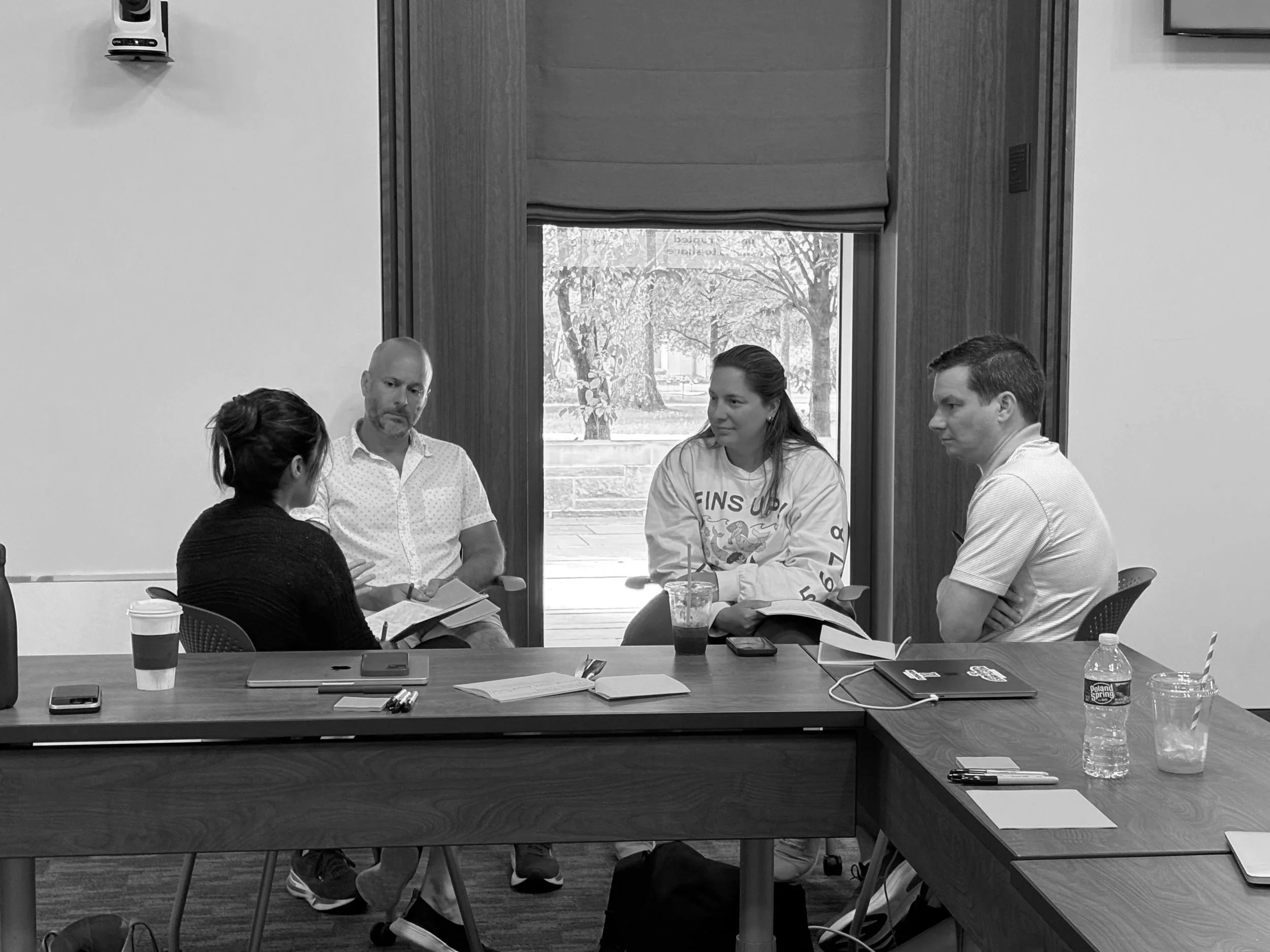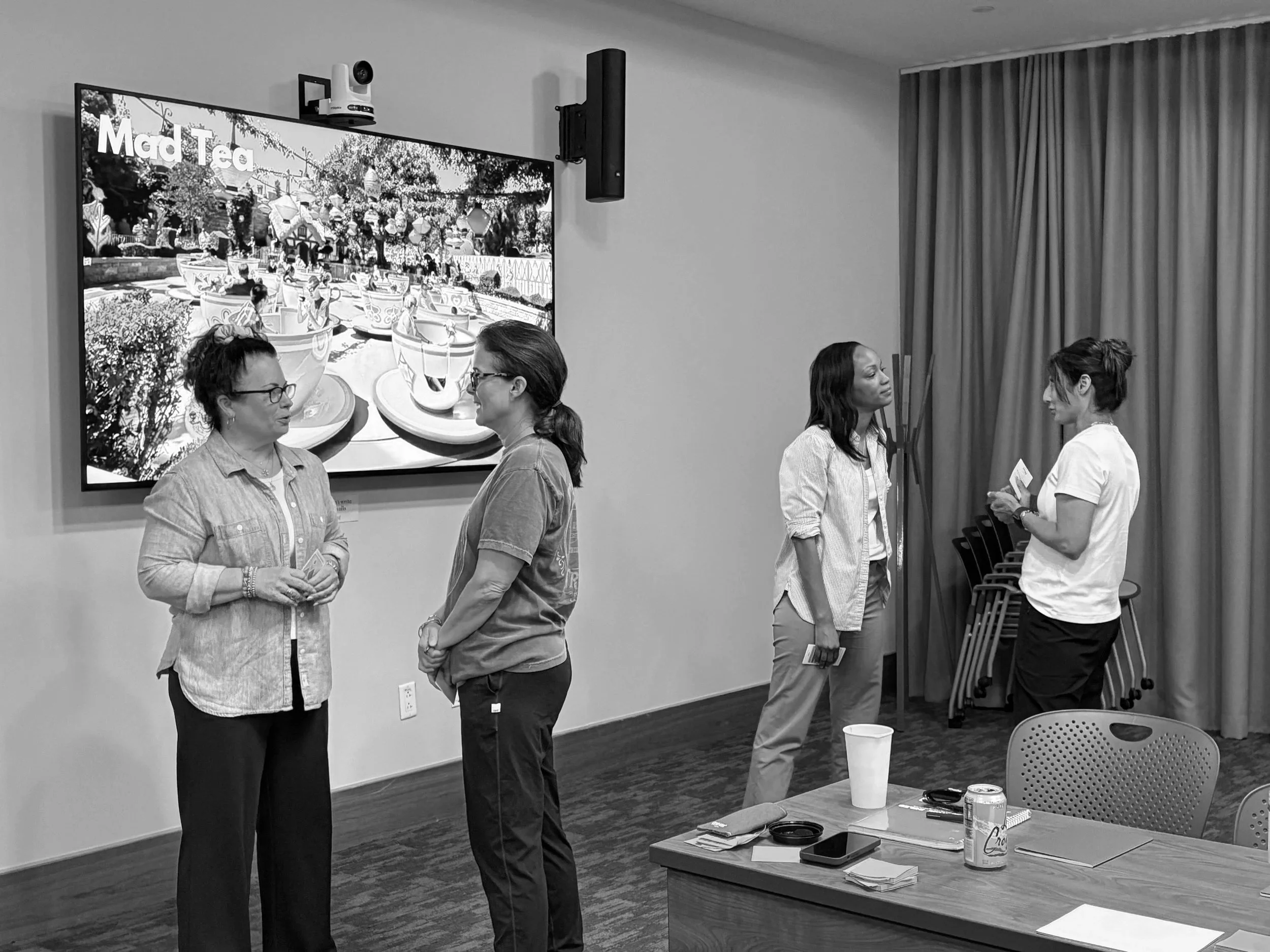TEAM X
“People are not taking the time to develop relationships and gain trust. Show up and show graciousness toward other people. Trust is based upon relationships. We need to develop those relationships over time and show up consistently. Be present.”
–From an interview with a school leader in answer to the question, “What does this team need?”
As the 14 school leaders from New York City’s Nightingale Bamford School learned quickly, “showing up” and being present for one another are critical parts of being on a dragon boat team. In many ways, a dragon boat team is a team like any other. It takes 20 people paddling two by two to propel the long, 800-pound boat through the water. Though each person has an individual role to play, the boat moves faster and more efficiently when the team moves in synchronicity. These are good lessons for a school leadership team, so there we were on a hot, July day, climbing into two dragon boats, the Delaware River stretching ahead of us. A few minutes of instruction on how to use a paddle and we pushed off from the dock, each school leader sitting shoulder to shoulder with a more experienced dragon boater.
Building Capacity one Team at a Time
By L+D Partner Shu Shu Costa
This was the kick off to a year-long Team Experience (X) engagement with NB’s senior leadership team, focused on group dynamics and nurturing a collaborative culture. We had spent the day having more serious, more reflective conversations. We told stories of our leadership journeys. We practiced being what David Brooks calls “illuminators,” special people who shine a generous light on others. We worked in small groups to develop team norms and agreements that will shape the culture of the team for the year to come. Now it was time to play - but with a few leadership team insights from the dragon boat leader.
“In together, out together.” Few skillsets are as important to a dragon boat as this one: when each of the 20 paddles go in the water at the same time and come out of the water at the same time, a boat lifts out of the deeper water and begins to skim the surface. There is no reward for lone heroics or for ego – the team that works best, works together.
“Watch your neighbors.” To synchronize your strokes, you need to keep focused on the people around you, matching their rhythm, their body movements. It takes both self awareness and group awareness to do it well. There is a lot of communication on a team, mostly encouragement, as you learn what it means to show up for one another.
“Eyes in the boat.” A paddle stroke is like a golf swing - it’s a whole-body motion that is made up of tiny movements and adjustments, all of which can go wrong in an instant. If your mind starts to drift, you will lose your timing or your form. As the sun began to sink over the Delaware that afternoon, we ended our day with three, thrilling mock races. The best of three won gold medals. In a race, if you focus on another team in another boat, you will quickly lose your stroke and with it, your team’s momentum. “Eyes in the boat” is a reminder to be absolutely present for you and for your team.
As the NB team trooped off the dock and onto dry land, laughing and ribbing each other, the day’s work and play felt like a win. We didn’t solve anything, not really. But we created shared vocabulary and experiences that will give us touchstones for deeper, perhaps harder, conversations in the year to come.




